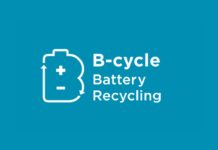
Brisbane-based battery manufacturer Redflow Limited has received funding for a 34.4 MWh long-duration energy storage (LDES) microgrid project in partnership with the US Department of Energy (DOE).
The ASX-listed company said the DOE has approved funding for this project, which is part of the department’s ambitious $325 million LDES program.
The primary objective of the program is to drive advancements in critical clean energy technologies, bolster the adoption of renewable energy resources, and enhance America’s energy security, Redflow said in a media release.
This particular project, known as the Children’s Hospital Resilient Grid with Energy Storage (CHARGES), will witness Redflow serving as the battery provider.
The initiative, to be sponsored and co-funded by the California Energy Commission (CEC), aims to facilitate the replacement of diesel generators at Valley Children’s Hospital in Madera, California, with cleaner and more cost-effective energy resources.
Redflow said the transition will not only enhance operational efficiency but also serve as a model for similar projects in hospitals and critical infrastructure across the country.
Moreover, the company will collaborate closely with its project development partner, Faraday Microgrids, to implement this transformational system.
This initiative also aligns with California’s ambitious target of installing 45-55 GW of LDES by 2045 to bolster grid reliability and facilitate the transition to clean energy sources.
Redflow’s CEO and Managing Director Tim Harris expressed enthusiasm about the project, stating, “Our batteries are ideally suited for daily use in the Central Valley’s extreme heat, and we’re proud to provide the resources the hospital needs to ensure safe, reliable operations.
“This combination of our technology leadership, Faraday’s trusted microgrid solutions, and the funding provided by the CEC and DOE all assist in transitioning communities to a cleaner, more energy-efficient future,” he added.
Following the funding announcement, the CEC will initiate negotiations with the DOE, seek approval from its commissioners for matching funding, and subsequently negotiate delivery agreements with Faraday Microgrids and Redflow.
Under the proposed project timeline, Redflow aims to supply 34.4 MWh of zinc-bromine flow batteries enclosed in modular energy pods by late 2025. This timeline is indicative and subject to final approvals and legal documentation.
In addition to Redflow batteries, the microgrid will integrate various other renewable energy resources, resulting in decarbonization, cost savings, enhanced resilience against natural disasters and power outages, and overall grid benefits.


















